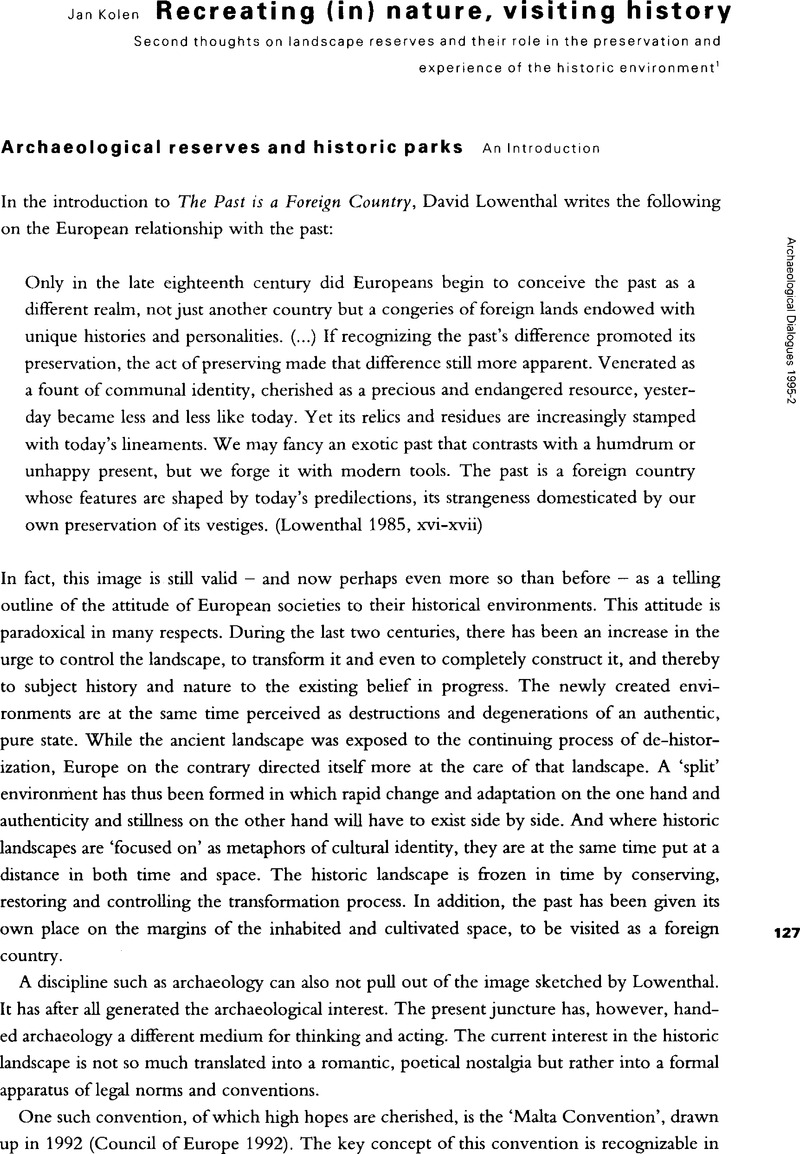Crossref Citations
This article has been cited by the following publications. This list is generated based on data provided by Crossref.
Löfgren, Orvar
1996.
Marketing the Past.
Archaeological Dialogues,
Vol. 3,
Issue. 2,
p.
126.
Odermatt, Peter
1996.
Heritage and Identity.
Archaeological Dialogues,
Vol. 3,
Issue. 2,
p.
131.
Fowler, Peter
1996.
Heritage Lines.
Archaeological Dialogues,
Vol. 3,
Issue. 2,
p.
128.
Annis, M. Beatrice
1996.
Appropriation and Preservation (Built) heritage as a common good.
Archaeological Dialogues,
Vol. 3,
Issue. 2,
p.
123.
Herzfeld, Michael
1996.
Monumental Indifference?.
Archaeological Dialogues,
Vol. 3,
Issue. 2,
p.
120.
Odermatt, Peter
1996.
Built heritage and the politics of (re) presentation.
Archaeological Dialogues,
Vol. 3,
Issue. 2,
p.
95.
Fontijn, David
1996.
Socializing landscape.
Archaeological Dialogues,
Vol. 3,
Issue. 1,
p.
77.
1997.
Towards an archaeology of invented and imaginary landscapes.
Archaeological Dialogues,
Vol. 4,
Issue. 1,
p.
2.
Berque, Augustin
1997.
There is only Mount Jingting.
Archaeological Dialogues,
Vol. 4,
Issue. 1,
p.
22.
Cosgrove, Denis
1997.
Inhabiting modern landscape.
Archaeological Dialogues,
Vol. 4,
Issue. 1,
p.
23.
Lemaire, Ton
1997.
Archaeology between the invention and the destruction of the landscape.
Archaeological Dialogues,
Vol. 4,
Issue. 1,
p.
5.
Ingold, Tim
1997.
The picture is not the terrain. Maps, paintings and the dwelt-in world.
Archaeological Dialogues,
Vol. 4,
Issue. 1,
p.
29.
Lemaire, Ton
1997.
Ambiguous landscape(s).
Archaeological Dialogues,
Vol. 4,
Issue. 1,
p.
32.
Kobylin´Ski, Zbigniew
2006.
Landscapes Under Pressure.
p.
213.
Roymans, Nico
Gerritsen, Fokke
Van der Heijden, Cor
Bosma, Koos
and
Kolen, Jan
2009.
Landscape Biography as Research Strategy: The Case of the South Netherlands Project.
Landscape Research,
Vol. 34,
Issue. 3,
p.
337.
Kolen, Jan
2009.
The ‘anthropologization’ of archaeological heritage.
Archaeological Dialogues,
Vol. 16,
Issue. 2,
p.
209.
van Lanen, Rowin J.
Kosian, Menne C.
Groenewoudt, Bert J.
Spek, Theo
and
Jansma, Esther
2015.
Best travel options: Modelling Roman and early-medieval routes in the Netherlands using a multi-proxy approach.
Journal of Archaeological Science: Reports,
Vol. 3,
Issue. ,
p.
144.
López Sánchez, Marina
Tejedor Cabrera, Antonio
and
Linares Gómez Del Pulgar, Mercedes
2020.
Guidelines from the heritage field for the integration of landscape and heritage planning: A systematic literature review.
Landscape and Urban Planning,
Vol. 204,
Issue. ,
p.
103931.
López Sánchez, Marina
Linares Gómez Del Pulgar, Mercedes
and
Tejedor Cabrera, Antonio
2021.
Historic construction of diffuse cultural landscapes: towards a GIS-based method for mapping the interlinkages of heritage.
Landscape Research,
Vol. 46,
Issue. 7,
p.
916.
Burgers, Gert-Jan
2021.
Tourism and Regional Science.
Vol. 53,
Issue. ,
p.
71.



